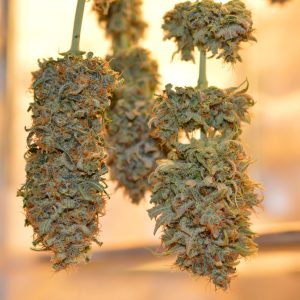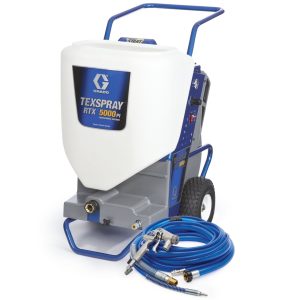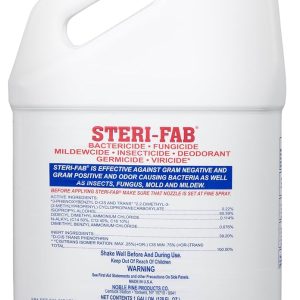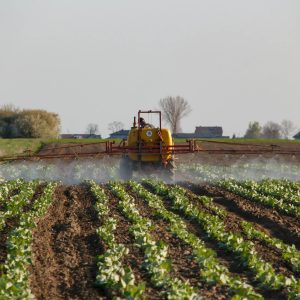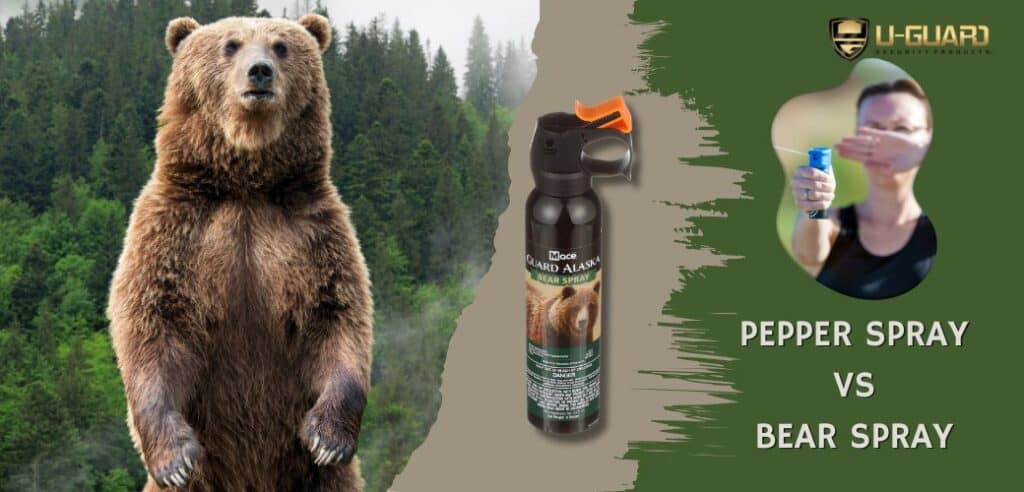
When it comes to personal protection and outdoor safety, understanding the differences between pepper spray vs bear spray can be crucial for making an informed decision. Both are non-lethal self-defense tools that use capsaicin as their active ingredient, but they serve different purposes and have distinct characteristics that make them suitable for specific situations. This comprehensive comparison will help you understand which option best fits your needs, whether you’re concerned about personal safety in urban environments or preparing for wilderness adventures.
The fundamental distinction between these two defensive sprays lies in their intended targets and formulation. While both products aim to incapacitate threats through the use of oleoresin capsicum (OC), the concentration levels, spray patterns, and regulatory considerations vary significantly. Understanding these differences is essential for anyone considering either option for protection, as using the wrong type in a given situation could potentially compromise your safety or even lead to legal complications.
What Is Pepper Spray and How Does It Work?
Pepper spray is a chemical compound derived from hot peppers, specifically capsaicin, which is the active ingredient responsible for the burning sensation. When deployed, pepper spray causes immediate inflammation of the mucous membranes in the eyes, nose, throat, and lungs, resulting in temporary blindness, difficulty breathing, and intense burning sensations. The effects typically last between 15 to 45 minutes, providing the user with an opportunity to escape from a threatening situation.
The effectiveness of pepper spray is measured using the Scoville Heat Unit (SHU) scale, which quantifies the concentration of capsaicin present in the formula. Most civilian pepper sprays range from 2 million to 5.3 million SHU, with law enforcement versions often reaching higher concentrations. The spray mechanism typically delivers the compound in a stream, cone, or foam pattern, each offering different advantages depending on the situation and environmental conditions.
Modern pepper spray formulations often include additional components such as UV dye for suspect identification and inert ingredients that help stabilize the active compound. The delivery systems have evolved significantly, with options ranging from small keychain models to larger canisters designed for home defense. The spray distance for most pepper sprays ranges from 6 to 12 feet, providing a reasonable safety buffer between the user and potential attacker.
Understanding Bear Spray: Wilderness Protection
Bear spray represents a specialized category of defensive spray specifically formulated and regulated for use against bears and other large wildlife. Unlike regular pepper spray, bear spray is designed to create a wide dispersal pattern that forms a defensive barrier between humans and charging wildlife. The Environmental Protection Agency (EPA) regulates bear spray as a pesticide, ensuring it meets specific standards for effectiveness and safety when used against bears.
The concentration of capsaicin in bear spray is typically lower than that found in personal pepper spray, usually ranging from 1% to 2% by weight. However, this lower concentration is offset by the significantly larger volume of spray released and the wider dispersal pattern. Bear spray canisters are considerably larger than personal pepper spray units, typically containing 7.9 to 9.2 ounces of spray compared to the 0.5 to 4 ounces found in personal defense sprays.
Studies conducted by wildlife biologists have demonstrated that bear spray is highly effective in deterring aggressive bears, with success rates exceeding 90% in documented encounters. The spray creates a temporary barrier that exploits the bear’s sensitive nose and respiratory system, causing disorientation and encouraging retreat without causing permanent harm to the animal. This makes bear spray an environmentally responsible choice for wildlife encounters compared to firearms, which can result in unnecessary wildlife fatalities.
Key Differences: Pepper Spray vs Bear Spray Comparison
Concentration and Potency
The most significant difference in the pepper spray vs bear spray debate lies in their formulation and concentration levels. Personal pepper spray typically contains 10% to 18% oleoresin capsicum with a Scoville rating between 2 million and 5.3 million SHU. This high concentration is designed to quickly incapacitate human attackers who may be under the influence of drugs or alcohol, requiring a more potent formula to ensure effectiveness.
Bear spray, conversely, contains a lower concentration of 1% to 2% oleoresin capsicum with Scoville ratings typically ranging from 2 million to 3.3 million SHU. This lower concentration might seem counterintuitive when facing a large predator, but bears have extremely sensitive respiratory systems and mucous membranes that respond effectively to lower concentrations. The reduced potency also minimizes the risk of causing permanent damage to wildlife, aligning with conservation principles.
Spray Pattern and Range
The delivery mechanism represents another crucial distinction between these two defensive tools. Personal pepper spray typically produces a stream or narrow cone pattern that allows for more precise targeting at shorter distances. The effective range usually spans 6 to 12 feet, which is appropriate for close-quarters self-defense situations where accuracy is essential to avoid affecting bystanders or the user themselves.
Bear spray is engineered to create a wide, foggy cloud that extends 15 to 30 feet from the user. This broad dispersal pattern creates a defensive wall that doesn’t require precise aiming, which is crucial when facing a charging bear moving at speeds up to 35 mph. The wider pattern also accounts for windy conditions common in outdoor environments and provides multiple opportunities for the spray to contact the animal’s face and respiratory system.
Canister Size and Volume
The physical differences between pepper spray and bear spray canisters reflect their intended applications and usage scenarios. Personal pepper spray units are designed for portability and discretion, typically measuring 3 to 5 inches in length and weighing 2 to 4 ounces when full. These compact dimensions allow for easy concealment and quick deployment in urban environments where space and weight considerations are important.
Bear spray canisters are substantially larger, measuring 7 to 9 inches in length and weighing 8 to 12 ounces when full. This increased size accommodates the larger volume of spray needed to create an effective barrier against charging wildlife. The larger trigger mechanism and safety features are designed to function reliably with gloved hands in outdoor conditions, while the increased weight provides better stability during deployment.
Legal Considerations and Regulations
Pepper Spray Legality
The legal landscape surrounding personal pepper spray varies significantly across jurisdictions, with some states and municipalities imposing restrictions on concentration levels, canister sizes, and carrying permits. In states like New York, pepper spray purchases require age verification and must be made through licensed dealers or pharmacies. California restricts the maximum canister size to 2.5 ounces and requires specific labeling requirements.
Some jurisdictions classify high-concentration pepper spray as a weapon, requiring permits or prohibiting civilian possession entirely. Massachusetts, for example, requires a firearms license to purchase pepper spray, while Michigan prohibits sprays containing more than 2% oleoresin capsicum. These regulations often extend to online purchases, with many retailers unable to ship to certain states due to varying legal requirements.
Bear Spray Regulations
Bear spray faces different regulatory challenges as it falls under EPA pesticide regulations rather than weapons laws. The EPA requires all bear spray products to be registered and tested for effectiveness against bears specifically. This registration process ensures that products meet minimum performance standards for spray distance, pattern width, and duration of discharge.
Most national parks and wilderness areas not only permit but actively encourage the use of bear spray as a wildlife deterrent. Yellowstone National Park, for instance, requires backcountry permits holders to carry bear spray and provides detailed instructions on proper deployment techniques. However, some parks restrict the disposal of used canisters, requiring visitors to carry out empty containers to prevent environmental contamination.
Effectiveness Analysis: Real-World Performance
Human Threat Scenarios
Statistical analysis of pepper spray effectiveness in human confrontations reveals success rates between 85% and 95% when properly deployed. The higher concentration and targeted delivery system of personal pepper spray proves particularly effective against human attackers who may be under the influence of substances that could reduce pain sensitivity. The immediate incapacitation effects typically provide sufficient time for escape or summoning help.
However, effectiveness can be compromised by environmental factors such as wind, rain, or confined spaces where the spray might affect the user. Studies indicate that approximately 15% of pepper spray deployments result in some level of cross-contamination, where the user experiences effects from their own spray. This risk is particularly relevant in indoor environments or when facing multiple attackers in close proximity.
Wildlife Encounter Statistics
Research conducted by the Alaska Science Center analyzing over 20 years of bear-human encounters found that bear spray was effective in stopping aggressive bear behavior in 92% of documented cases. This success rate surpassed that of firearms, which showed effectiveness in 76% of encounters but resulted in wildlife fatalities in 61% of cases. The study encompassed various bear species, including grizzly bears, black bears, and polar bears across different geographical regions.
The effectiveness of bear spray extends beyond bears to other large wildlife species. Wildlife biologists have documented successful deterrent effects against mountain lions, moose, and aggressive elk. The broad spray pattern and sufficient range provide users with multiple opportunities to deploy the spray effectively, even when facing fast-moving animals in challenging terrain.
When to Choose Pepper Spray vs Bear Spray
Urban and Suburban Protection
For individuals living in urban or suburban environments where human threats are the primary concern, personal pepper spray remains the optimal choice. The higher concentration and targeted delivery system provide maximum effectiveness against human attackers while maintaining portability for everyday carry. The compact size allows for discretion and quick deployment in crowded environments where precision is essential to avoid affecting innocent bystanders.
Personal pepper spray also offers advantages in vehicle defense scenarios, where the confined space and potential for multiple attackers require a more concentrated and precisely delivered deterrent. The variety of available delivery systems, including stream patterns for windy conditions and foam formulations for indoor use, provide flexibility for different threat scenarios commonly encountered in populated areas.
Wilderness and Outdoor Activities
When venturing into wilderness areas where large wildlife encounters are possible, bear spray becomes the clear choice for protection. The wider spray pattern and longer range provide crucial advantages when facing charging wildlife, while the EPA registration ensures the product has been tested specifically for effectiveness against bears. The larger canister size also provides multiple deployment opportunities, which is essential given the potential for extended encounters with curious or aggressive wildlife.
Bear spray is particularly important for activities such as hiking, camping, fishing, and hunting in areas with known bear populations. Many wilderness experts recommend carrying bear spray even when armed with firearms, as the spray provides a non-lethal first line of defense that can resolve confrontations without harming wildlife or requiring precise shot placement under stress.
Comparative Cost Analysis
| Feature | Pepper Spray | Bear Spray |
|---|---|---|
| Average Cost | $15-$40 | $30-$60 |
| Spray Volume | 0.5-4 oz | 7.9-9.2 oz |
| Effective Range | 6-12 feet | 15-30 feet |
| Spray Duration | 5-15 seconds | 6-9 seconds |
| Shelf Life | 3-4 years | 3-4 years |
| Refill Availability | Limited | Common |
The cost analysis reveals that while bear spray has a higher upfront cost, it provides significantly more spray volume and longer effective range. Personal pepper spray offers better value for frequent carry scenarios where weight and discretion are priorities, but may require more frequent replacement due to smaller canister sizes and higher likelihood of accidental discharge.
Training and Deployment Techniques
Proper Pepper Spray Technique
Effective deployment of personal pepper spray requires understanding proper grip, stance, and targeting techniques. The spray should be held firmly with the dominant hand, thumb on the actuator, and aimed at the attacker’s face from a distance of 6 to 8 feet. The recommended technique involves creating a side-to-side sweeping motion across the target’s face while maintaining backward movement to increase distance from the threat.
Training scenarios should include practicing deployment under stress conditions, understanding wind effects on spray patterns, and recognizing signs of cross-contamination. Many self-defense instructors recommend practicing with inert training sprays to develop muscle memory and confidence in deployment techniques. Regular practice sessions help users overcome the natural hesitation that can occur during high-stress encounters.
Bear Spray Deployment Strategy
Bear spray deployment requires different techniques optimized for wildlife encounters. The spray should be deployed when a bear approaches within 20 to 30 feet, creating a defensive barrier between the user and the animal. Unlike personal pepper spray, bear spray should be deployed in a continuous burst rather than short bursts, maintaining the protective cloud until the bear retreats or changes direction.
Wildlife experts recommend carrying bear spray in an easily accessible location, such as a chest holster or belt mount, rather than buried in a backpack. The deployment technique involves removing the safety clip, aiming slightly downward to account for the spray’s trajectory, and maintaining steady pressure on the actuator. Users should be prepared to deploy multiple bursts if the initial spray doesn’t deter the animal.
Storage and Maintenance Considerations
Environmental Factors
Both pepper spray and bear spray are sensitive to extreme temperatures, with effectiveness decreasing significantly in temperatures below 32°F or above 120°F. Storage in vehicles during summer months can cause canister pressure to increase beyond safe levels, potentially leading to leaks or deployment failures. Similarly, winter storage requires keeping canisters at moderate temperatures to ensure proper spray pressure and pattern formation.
Humidity and altitude can also affect spray performance, with high-humidity environments potentially reducing spray distance and effectiveness. Users in coastal or mountainous regions should consider these factors when selecting and storing their defensive sprays. Regular inspection for corrosion, damage, or leakage ensures reliability when the spray is needed most.
Replacement and Testing
Most pepper spray and bear spray manufacturers recommend replacing canisters every 3 to 4 years, regardless of whether they’ve been used. The propellant and active ingredients can degrade over time, reducing effectiveness and potentially causing deployment failures. Many manufacturers include expiration dates on their products, but users should also monitor for signs of degradation such as reduced spray distance or altered spray patterns.
Testing protocols vary between manufacturers, but most recommend periodic test firing to ensure proper function. However, each test deployment reduces the total available spray volume, requiring balance between confidence in the product and conservation of defensive capability. Some manufacturers offer practice canisters filled with inert substances specifically for training purposes.
Alternative Considerations and Complementary Tools
Technology Integration
Modern personal safety technology increasingly integrates with traditional defensive tools like pepper spray. GPS-enabled personal alarms can automatically alert emergency services when pepper spray is deployed, while smartphone apps can provide real-time location sharing during threatening situations. Some manufacturers now offer pepper spray units with integrated LED lights, sirens, or even camera systems for evidence collection.
For outdoor enthusiasts, GPS emergency beacons and satellite communicators provide crucial backup communication when venturing into remote areas where bear encounters are possible. These devices can summon rescue services even in areas without cellular coverage, providing an additional layer of safety beyond bear spray alone.
Training and Education Programs
Professional training programs for both pepper spray and bear spray deployment are increasingly available through law enforcement agencies, outdoor recreation organizations, and private instructors. These programs often include hands-on practice with inert training sprays, scenario-based exercises, and education about legal considerations and aftermath procedures.
Many wilderness education programs now incorporate bear spray training as part of comprehensive outdoor safety curricula. Organizations like the National Outdoor Leadership School (NOLS) and Outward Bound include bear spray instruction alongside traditional wilderness skills, recognizing its importance in modern outdoor recreation safety.
Purchasing Recommendations and Quality Factors
Reputable Manufacturers
When selecting between pepper spray vs bear spray, choosing products from established manufacturers ensures compliance with safety standards and effectiveness testing. For personal pepper spray, companies like Sabre, Mace, and Fox Labs have established reputations for quality and reliability. These manufacturers typically offer comprehensive product lines with various sizes, concentrations, and delivery systems to meet different user needs.
Bear spray selection should focus on EPA-registered products from manufacturers specializing in wildlife deterrents. Counter Assault, UDAP, and Frontiersman are among the leading bear spray manufacturers, with products specifically tested and approved for effectiveness against bears. These companies often provide detailed instruction materials and customer support for proper deployment techniques.
Quality Indicators
High-quality defensive sprays share several common characteristics that indicate reliability and effectiveness. The spray pattern should be consistent and predictable, with clearly marked expiration dates and batch numbers for quality control tracking. Reputable manufacturers provide detailed specifications including spray distance, pattern width, concentration levels, and deployment duration.
Packaging quality often reflects internal product quality, with well-designed actuators, safety mechanisms, and clear labeling indicating attention to detail in manufacturing. Products should include comprehensive instruction materials, safety warnings, and guidance on proper storage and maintenance procedures.
Environmental and Ethical Considerations
Environmental Impact
The environmental impact of defensive sprays varies significantly between formulations and usage scenarios. Personal pepper spray typically contains synthetic carriers and propellants that may not readily biodegrade, potentially causing environmental contamination if improperly disposed. However, the small volumes typically involved in personal defense scenarios minimize long-term environmental impact.
Bear spray, being EPA-regulated as a pesticide, undergoes environmental impact assessment as part of the registration process. The natural capsaicin-based formulation generally biodegrades more readily than synthetic alternatives, and the wildlife-specific testing ensures minimal long-term effects on target animals. However, repeated use in popular wilderness areas can potentially accumulate in soil and water systems.
Ethical Wildlife Management
The use of bear spray aligns with modern wildlife management principles emphasizing non-lethal resolution of human-wildlife conflicts. By providing an effective deterrent that doesn’t harm wildlife populations, bear spray supports conservation efforts while maintaining human safety. This approach contrasts with lethal methods that can disrupt animal behavior patterns and reduce genetic diversity in wildlife populations.
Educational initiatives promoting proper bear spray use contribute to broader wildlife conservation goals by reducing the likelihood of problem animal destruction. When humans and wildlife can coexist safely, it supports ecosystem health and maintains the natural behaviors that make wildlife viewing and outdoor recreation possible.
Specialized Applications and Niche Uses
Professional and Occupational Use
Certain professions require specialized consideration when choosing between pepper spray vs bear spray. Security personnel, law enforcement officers, and emergency responders typically require personal pepper spray with precise targeting capabilities and higher concentrations suitable for human threats. These applications often involve additional training requirements and legal considerations beyond civilian use.
Wildlife biologists, forest service personnel, and outdoor recreation professionals frequently carry bear spray as part of their standard equipment. These users often require specialized training in wildlife behavior and advanced deployment techniques, as their work brings them into regular contact with potentially dangerous wildlife in their natural habitats.
International Travel Considerations
International travel significantly complicates the transport and possession of defensive sprays, with many countries prohibiting or strictly regulating both pepper spray and bear spray. European Union regulations generally classify pepper spray as a weapon, requiring permits or prohibiting civilian possession entirely. Similarly, many Asian countries have strict import restrictions on defensive sprays.
Travelers should research destination-specific regulations well in advance and consider alternative personal safety measures for international trips. Some countries offer locally-approved defensive sprays for tourist use, while others provide detailed guidance on permitted personal protection devices for foreign visitors.
Maintenance and Longevity Factors
Storage Best Practices
Proper storage significantly extends the useful life and reliability of both pepper spray and bear spray products. Storage locations should maintain consistent temperatures between 32°F and 120°F, avoiding areas subject to extreme temperature fluctuations such as vehicle glove compartments or outdoor storage sheds. Humidity control is equally important, with storage in dry locations preventing corrosion of metal components and degradation of seals.
Vertical storage with the actuator facing upward helps prevent settling of active ingredients and ensures consistent spray performance. Regular rotation of stored canisters helps identify potential problems before they compromise effectiveness, while periodic visual inspections can detect corrosion, damage, or leakage that might affect performance.
Performance Monitoring
Effective maintenance includes regular monitoring of spray performance indicators such as spray distance, pattern consistency, and deployment pressure. Users should become familiar with their specific product’s normal performance characteristics to identify degradation over time. Many manufacturers provide performance specifications that can serve as benchmarks for evaluating canister condition.
Documentation of purchase dates, lot numbers, and performance testing results helps track product reliability and identify trends that might indicate manufacturing issues or environmental factors affecting storage. This information can be valuable for warranty claims or quality feedback to manufacturers.
FAQs: Pepper Spray vs Bear Spray
Is bear spray stronger than pepper spray?
Bear spray typically contains a lower concentration of oleoresin capsicum (1-2%) compared to pepper spray (10-18%), but compensates with larger volume and wider spray pattern. The effectiveness depends on the intended target, with pepper spray being more concentrated for human threats while bear spray creates a broader defensive barrier for wildlife.
Can I use pepper spray on bears?
While pepper spray can affect bears, it’s not recommended as the primary defense. Bear spray is specifically formulated and EPA-tested for effectiveness against bears, featuring optimal spray patterns and range for wildlife encounters. Using pepper spray on bears may not provide adequate protection due to its narrower spray pattern and shorter range.
Which lasts longer, pepper spray or bear spray?
Both products typically have similar shelf lives of 3-4 years when stored properly. However, bear spray canisters contain significantly more product volume (7.9-9.2 oz vs 0.5-4 oz), providing more total spray time despite similar expiration dates. The larger volume makes bear spray more suitable for extended wilderness trips.
Is it legal to carry bear spray in national parks?
Yes, bear spray is legal and actively encouraged in most national parks, particularly those with known bear populations. Many parks provide bear spray rental services and educational programs on proper deployment techniques. However, airline travel restrictions apply, and used canisters must be properly disposed of according to park regulations.
How far can pepper spray vs bear spray reach?
Personal pepper spray typically has an effective range of 6-12 feet, while bear spray can reach 15-30 feet. The increased range of bear spray is crucial for wildlife encounters, providing more time to deploy the spray before a charging animal reaches the user. Wind conditions can significantly affect the effective range of both products.
Can pepper spray vs bear spray be used indoors?
Personal pepper spray can be used indoors but requires ventilation considerations due to potential cross-contamination. Bear spray is generally not recommended for indoor use due to its wide spray pattern and large volume, which could affect everyone in the area. Foam-based pepper sprays are preferred for indoor applications.
What should I do after using pepper spray or bear spray?
After deployment, move to a safe location and seek medical attention if you experience cross-contamination effects. Contact local authorities if the spray was used in self-defense against a human threat. For bear spray use, report the incident to park authorities or wildlife management agencies. Both products require proper disposal according to local regulations.
Do pepper spray and bear spray work in cold weather?
Both products can experience reduced effectiveness in temperatures below 32°F due to decreased pressure and altered spray patterns. Some manufacturers offer cold-weather formulations with modified propellants for improved performance in low temperatures. Users should test their products in expected weather conditions and consider carrying backup canisters in extreme cold.
For more information about personal protection options, you might also be interested in learning about pt 141 nasal spray and its applications.
Ready to choose the right protection for your needs? Research the specific pepper spray vs bear spray options available in your area, considering your intended use, local regulations, and environmental conditions. Whether you need urban personal protection or wilderness wildlife defense, selecting the appropriate spray type and receiving proper training can significantly enhance your safety and confidence.
